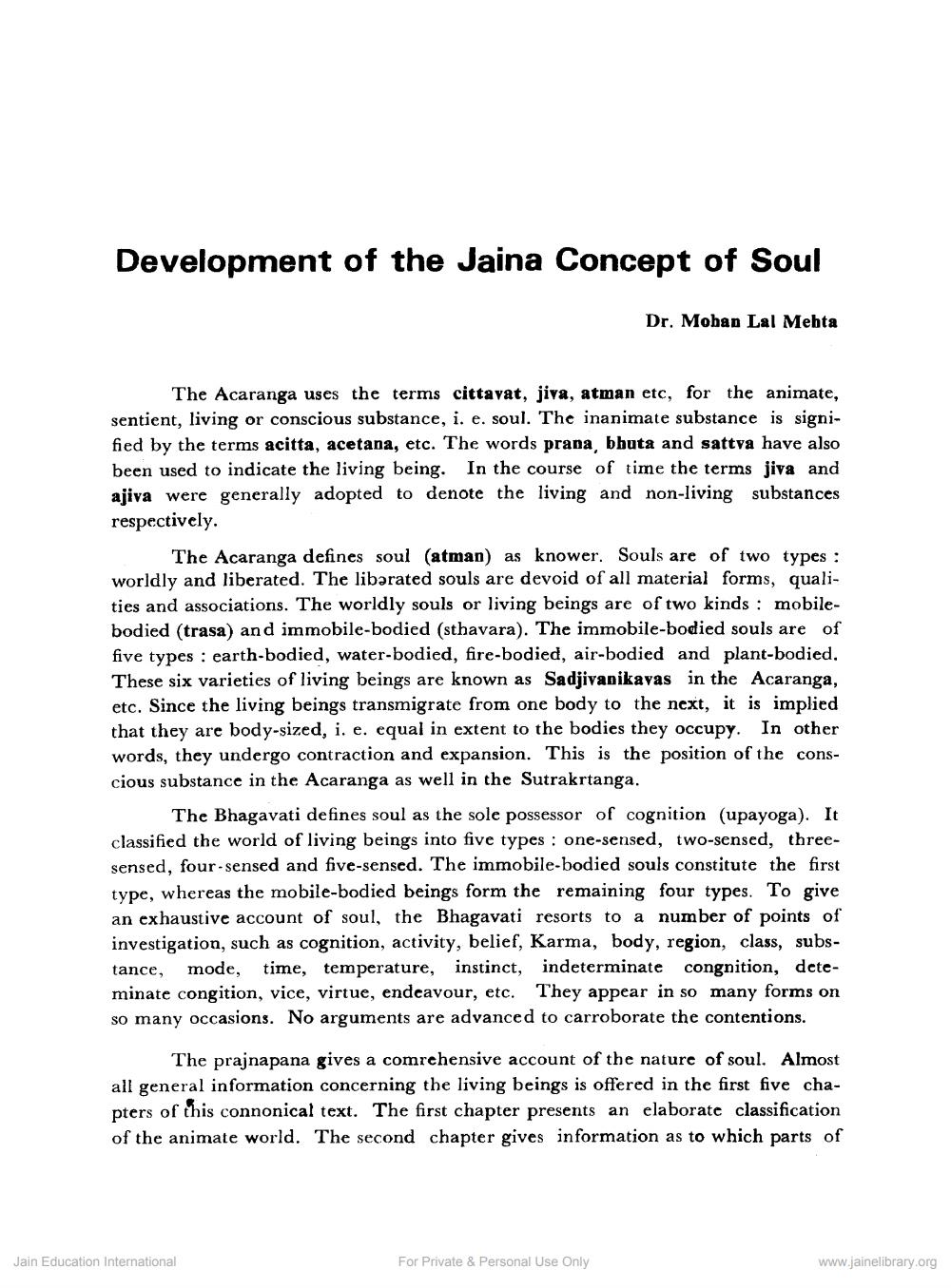________________
Development of the Jaina Concept of Soul
Dr. Mohan Lal Mehta
The Acaranga uses the terms cittavat, jiva, atman etc, for the animate, sentient, living or conscious substance, i. e. soul. The inanimate substance is signified by the terms acitta, acetana, etc. The words prana, bhuta and sattva have also been used to indicate the living being. In the course of time the terms jiva and ajiva were generally adopted to denote the living and non-living substances respectively.
The Acaranga defines soul (atman) as knower. Souls are of two types : worldly and liberated. The libərated souls are devoid of all material forms, qualities and associations. The worldly souls or living beings are of two kinds : mobilebodied (trasa) and immobile-bodied (sthavara). The immobile-bodied souls are of five types : earth-bodied, water-bodied, fire-bodied, air-bodied and plant-bodied, These six varieties of living beings are known as Sadjivanikavas in the Acaranga, etc. Since the living beings transmigrate from one body to the next, it is implied that they are body-sized, i. e. equal in extent to the bodies they occupy. In other words, they undergo contraction and expansion. This is the position of the conscious substance in the Acaranga as well in the Sutrakrtanga.
The Bhagavati defines soul as the sole possessor of cognition (upayoga). It classified the world of living beings into five types : one-sensed, two-sensed, threesensed, four-sensed and five-sensed. The immobile-bodied souls constitute the first type, whereas the mobile-bodied beings form the remaining four types. To give an exhaustive account of soul, the Bhagavati resorts to a number of points of investigation, such as cognition, activity, belief, Karma, body, region, class, substance, mode, time, temperature, instinct, indeterminate congnition, deteminate congition, vice, virtue, endeavour, etc. They appear in so many forms on so many occasions. No arguments are advanced to carroborate the contentions.
The prajnapana gives a comrehensive account of the nature of soul. Almost all general information concerning the living beings is offered in the first five chapters of this connonical text. The first chapter presents an elaborate classification of the animate world. The second chapter gives information as to which parts of
Jain Education International
For Private & Personal Use Only
www.jainelibrary.org




